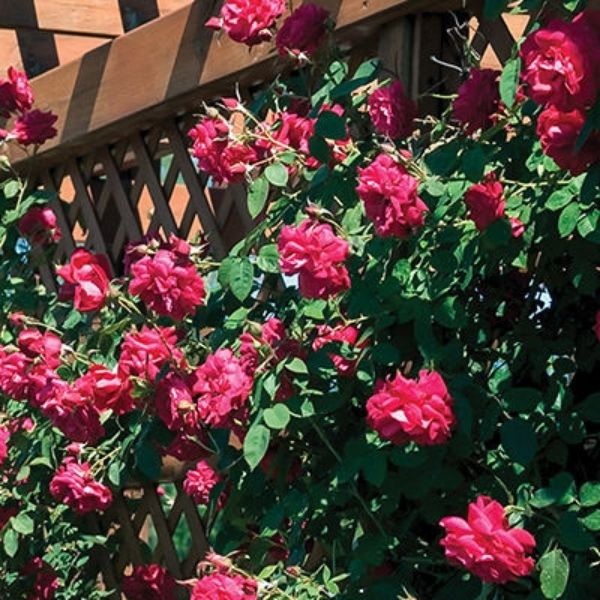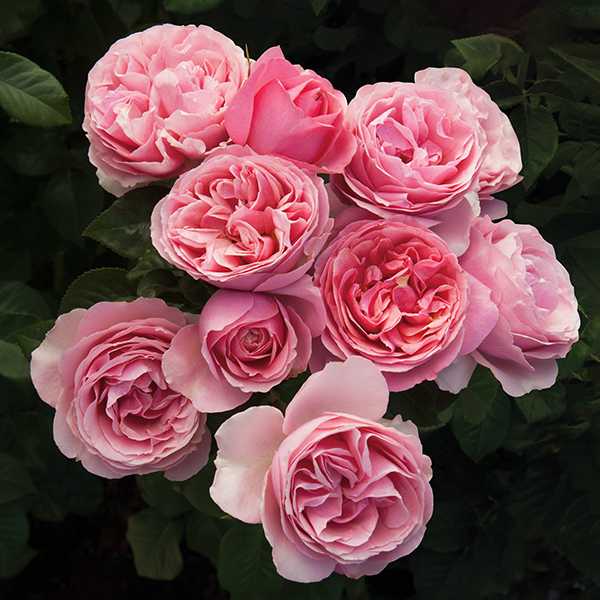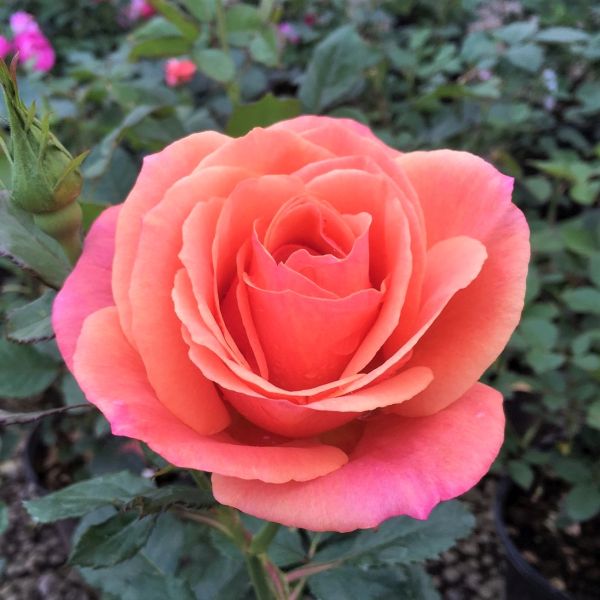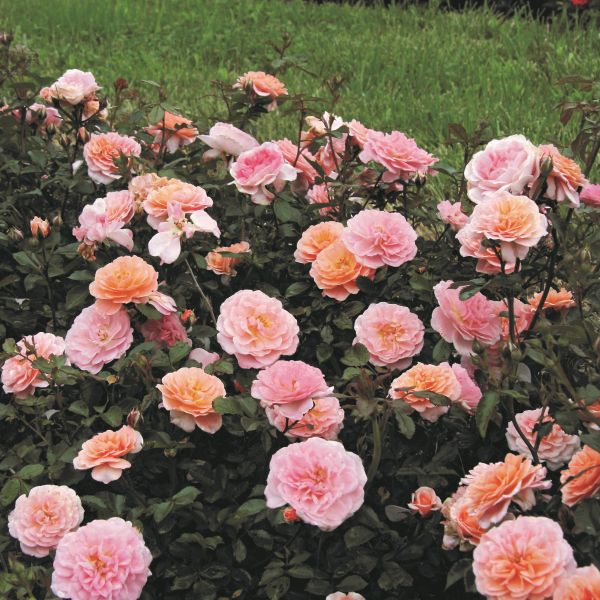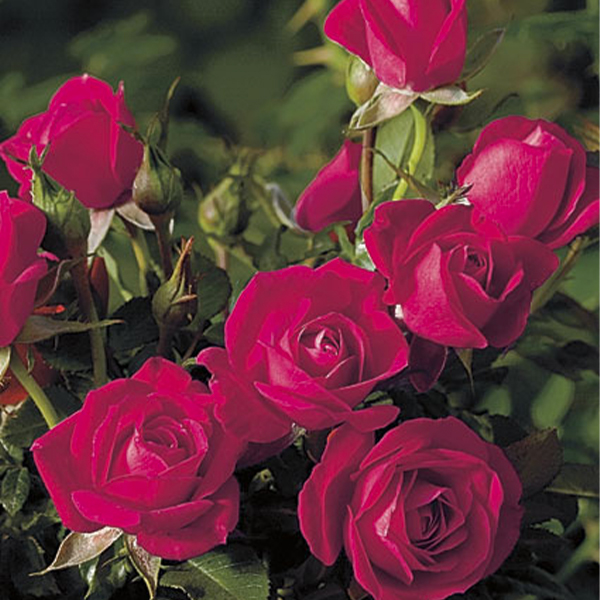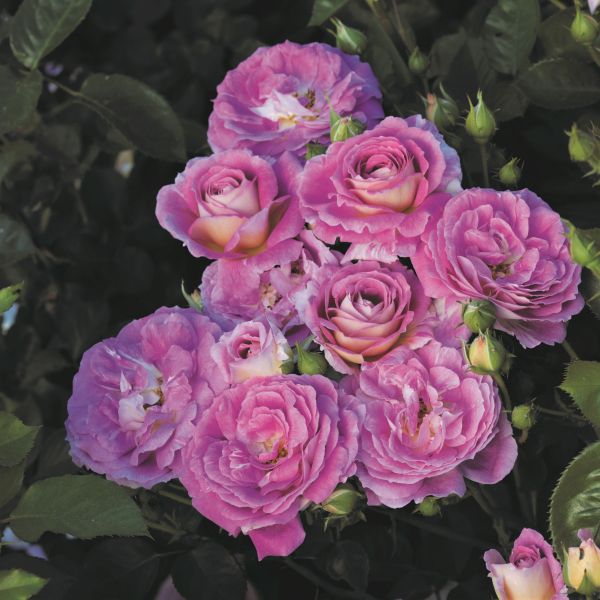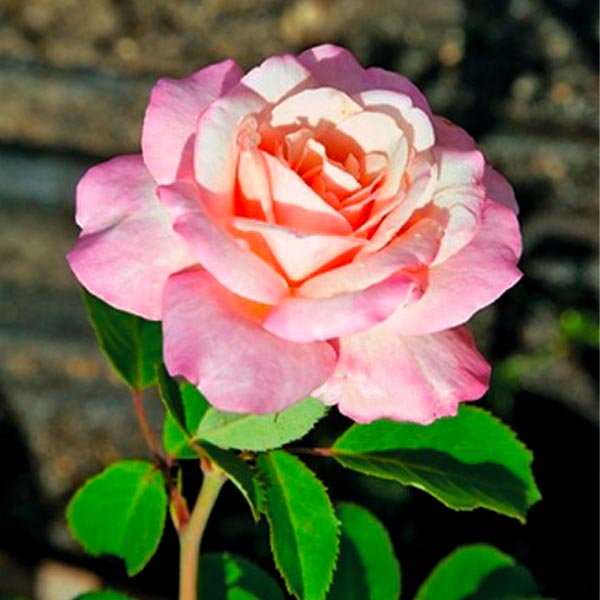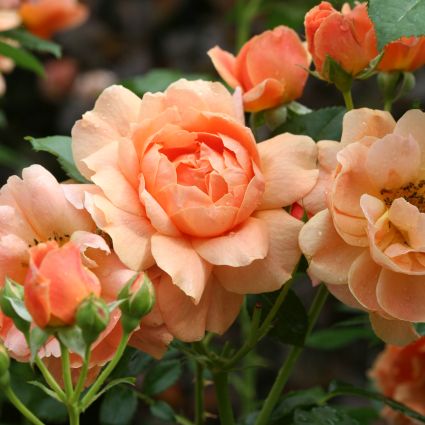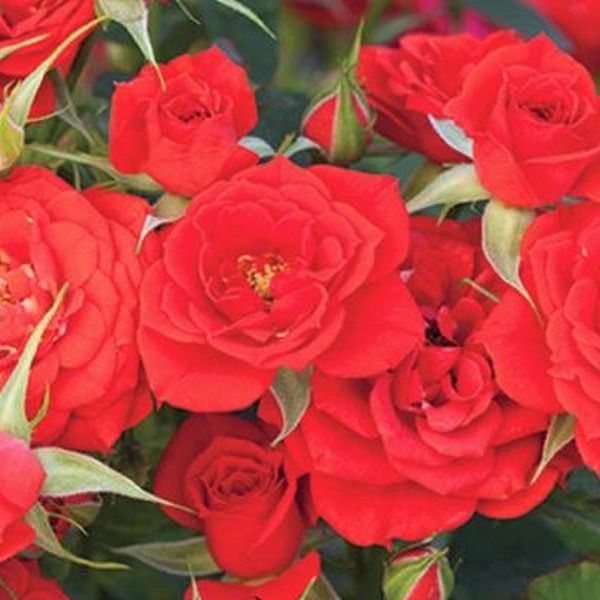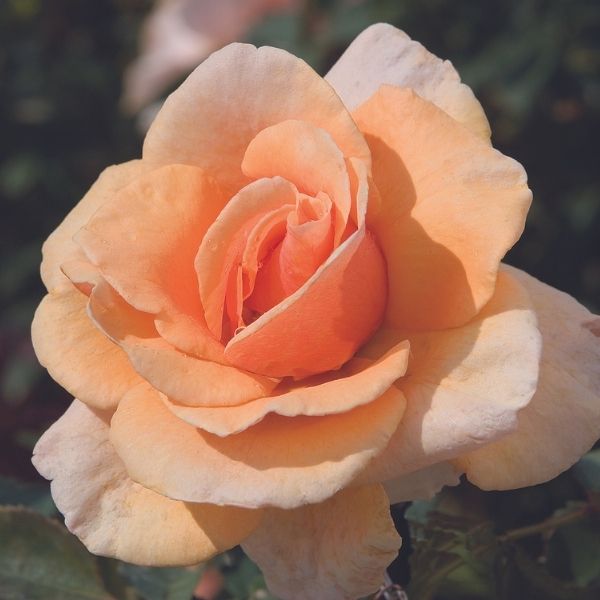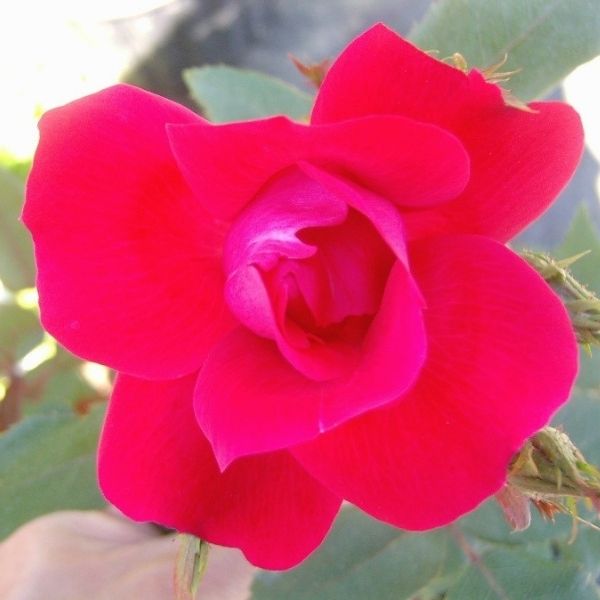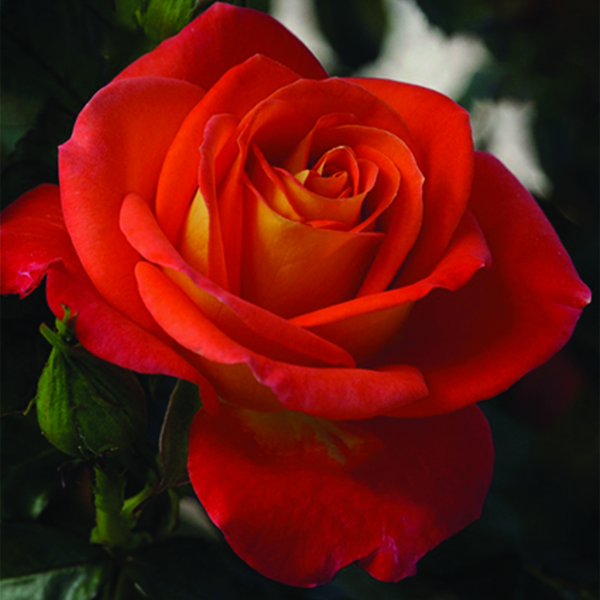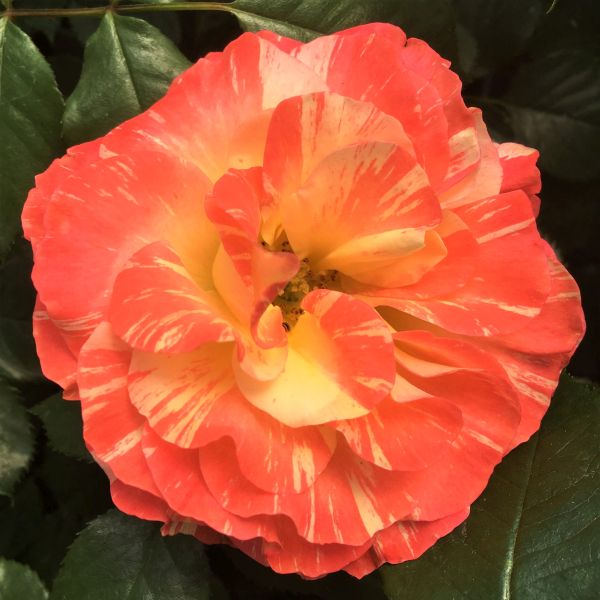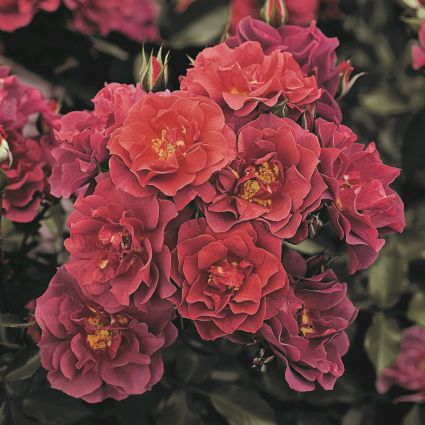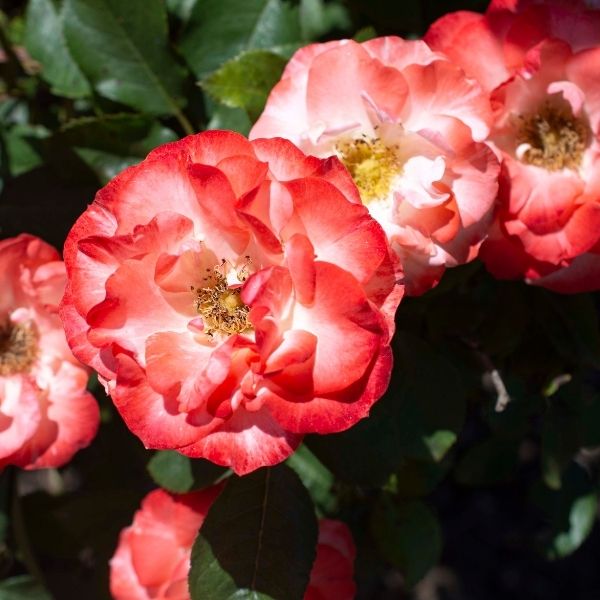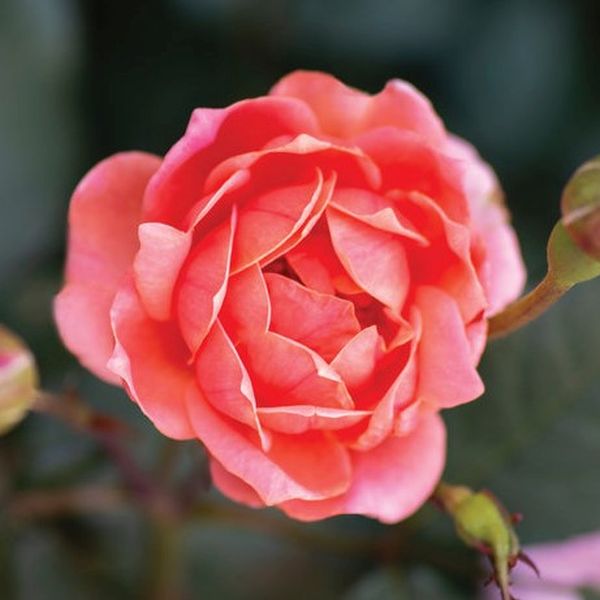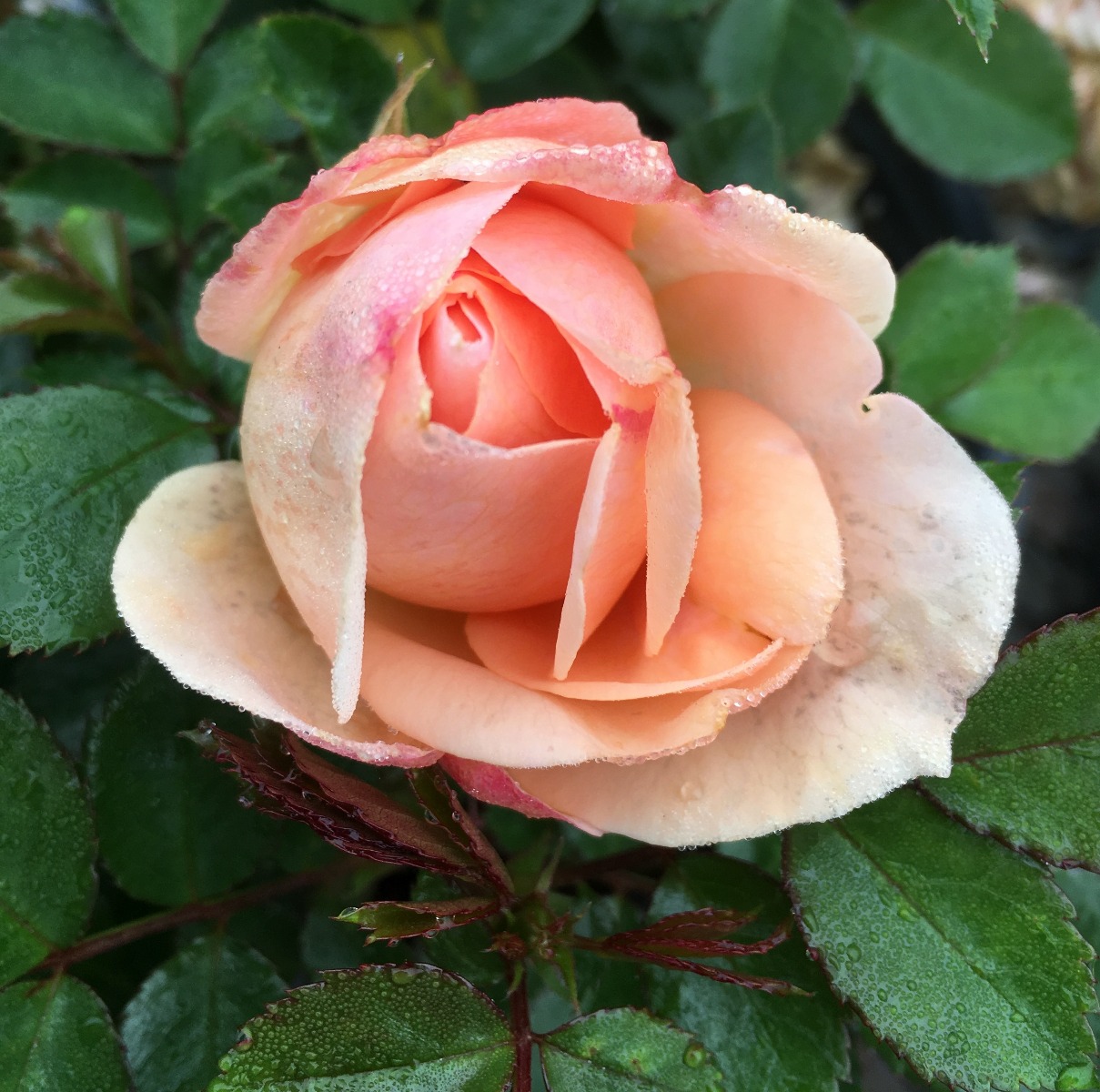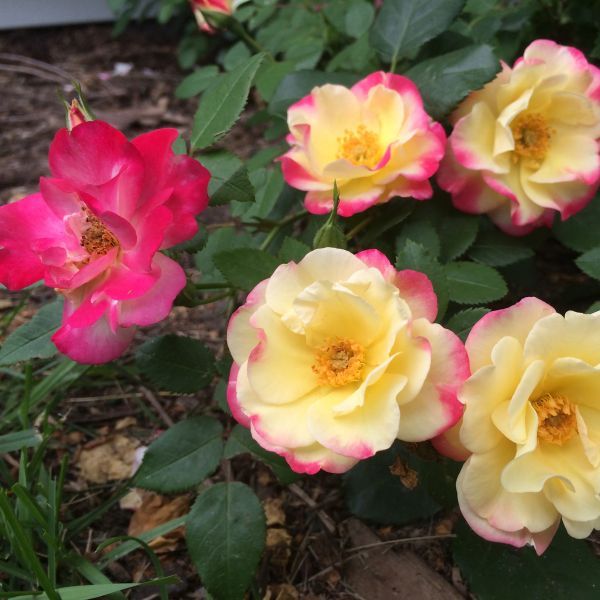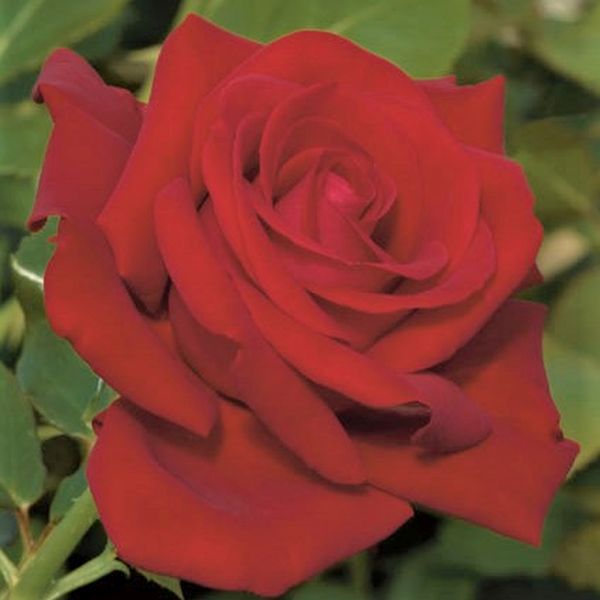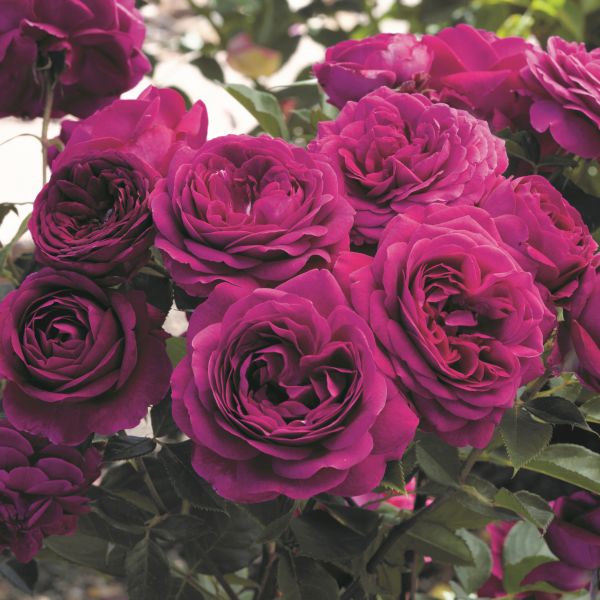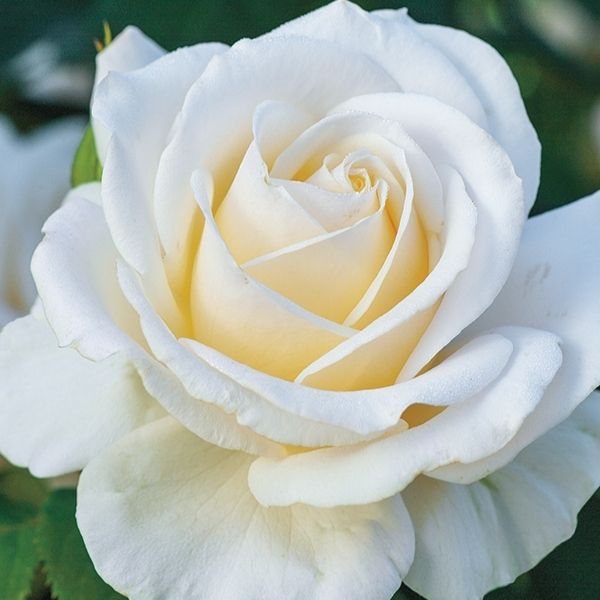
Rambling Red Rose
Rosa 'Ramblin Red'
10 reviews

Rambling Red Rose
Rosa 'Ramblin Red'
10 reviews
- Handpicked at peak ripeness for maximum flavor
- Grown sustainably without the use of harmful pesticides
- Locally sourced from family-owned farms
- Ships in 3 to 7 days
- Free Shipping Over $150
- Plant Arrival Guarantee
- In Stock
$86.00
$122.86
30% Off
2.5 Gallon
Why Rambling Red Rose?
Rambling Red Rose (Rosa 'Ramblin Red') is a popular choice for garden enthusiasts due to its stunning blooms and vigorous growth. This rambling rose variety produces vibrant red flowers that add a burst of color to any landscape. With a maximum height of 10 feet and a spread of up to 15 feet, it creates an impressive display and can be trained to climb fences or trellises. Its ability to thrive in various soil types and climates makes it a versatile and low-maintenance choice for gardeners.
People who loved this plant also bought
Sunlight
Rambling Red Rose requires full sun exposure for optimal growth and blooming.
Watering
The watering requirement for Rambling Red Rose is moderate. It should be watered regularly, but not excessively. It is important to keep the soil moist, but avoid overwatering which can lead to root rot.
Fertilizing
The fertilizer requirement for Rambling Red Rose may vary depending on the specific soil conditions and nutrient levels. It is recommended to use a balanced rose fertilizer with an NPK ratio of around 10-10-10 or 12-12-12, applied according to the manufact
Rambling Red Rose (Rosa 'Ramblin Red')
The Rambling Red Rose, scientifically known as Rosa 'Ramblin Red', is a stunning climbing rose variety that adds a vibrant touch to any garden or landscape. This rose cultivar is famous for its sprawling growth habit and eye-catching deep red flowers.
Key Features:
- Flower Color: Deep red
- Flower Form: Double blooms
- Bloom Time: Late spring to early summer
- Plant Height: Up to 10 feet
- Plant Width: Up to 6 feet
- Exposure: Full sun
- USDA Hardiness Zones: 5-9
- Fragrance: Mild sweet scent
- Thorniness: Moderately thorny
- Foliage: Dark green
Description:
With its vigorous climbing habit, the Rambling Red Rose is an excellent choice for covering walls, trellises, or fences. This variety features large, double blossoms in a captivating deep red color that exudes elegance and charm. The blooms are delightfully fragrant with a sweet scent that adds a pleasant aura to any garden environment.
In late spring to early summer, the Rambling Red Rose bursts into a profusion of flowers, creating a breathtaking display. The vivid red petals stand out beautifully against the dark green foliage, providing a stunning contrast that is sure to catch the eye. The long, arching canes of this rose can reach up to 10 feet in height and spread up to 6 feet, effortlessly covering any structure or area.
This rose variety is generally easy to care for and relatively disease-resistant. It thrives in full sun exposure and prefers well-drained soil. Regular pruning can help maintain its shape and promote healthy growth.
Uses:
The Rambling Red Rose is an outstanding choice for creating a vertical focal point in gardens, courtyards, or other outdoor spaces. It can be utilized to embellish walls, arches, pergolas, or fences, adding a touch of romance and beauty. Its sprawling growth makes it suitable for covering unsightly structures or creating living privacy screens.
While this rose is often admired when left to scramble naturally, it can be trained to grow horizontally for ground cover purposes as well. The Rambling Red Rose is sure to make a statement wherever it is planted, providing lasting beauty and a touch of classic elegance.
Plant Information:
| Botanical Name: | Rosa 'Ramblin Red' |
| USDA Zones: | 4-7 |
| Water: | Moderate |
| Exposure: | Full Sun |
| Soil Needs: | Well Drained |
| Mature Height: | 6 - 10 feet |
| Mature Spread: | 6 feet |





Pollination Info
Rambling Red Rose (Rosa 'Ramblin Red') - Pollination Info
1. General Information:
The Rambling Red Rose, scientifically known as Rosa 'Ramblin Red', is a vigorous climbing rose variety with stunning red flowers. It belongs to the family Rosaceae.
2. Flowering and Blooming:
The Rambling Red Rose typically produces abundant flowers in late spring or early summer. The blooms are large and showy, measuring about 3-4 inches in diameter. The flowers have a vibrant red color and a delightful fragrance that attracts pollinators.
3. Pollination:
The Rambling Red Rose relies on pollinators to transfer pollen between flowers for successful fertilization and fruit production. It is an insect-pollinated plant, and various bees, butterflies, and other insects are attracted to its flowers.
4. Pollinator-friendly Features:
The Rambling Red Rose possesses several features that make it particularly attractive to pollinators:
- Color and Shape: The bright red color of the flowers is highly visible to pollinators, effectively attracting them to the blooms. The open shape of the flowers also allows easy access for insects.
- Fragrance: The sweet fragrance emitted by the flowers acts as a powerful attractant for pollinators. Bees and butterflies are especially drawn to the scent.
- Pollen and Nectar: The Rambling Red Rose provides an ample supply of pollen and nectar as a reward for visiting pollinators. Bees collect pollen, while butterflies and other insects primarily feed on nectar.
5. Cross-pollination:
Rose plants, including the Rambling Red Rose, are generally self-fertile, meaning they are capable of producing viable seeds and fruits through self-pollination. However, cross-pollination with other rose varieties can result in increased genetic diversity and potentially better seed quality.
6. Attracting Pollinators:
To ensure successful pollination and a healthy ecosystem, consider implementing the following measures to attract pollinators to your Rambling Red Rose:
- Plant Diversity: Create a diverse garden with a variety of flowering plants to attract a wide range of pollinators.
- Provide Habitat: Include nesting sites, water sources, and sheltered areas to support pollinators throughout their life cycles.
- Avoid Pesticides: Minimize the use of pesticides, as they can be harmful to pollinators. Choose organic, pollinator-friendly alternatives whenever possible.
7. Fruit Development:
After successful pollination, the Rambling Red Rose produces small, rounded fruits called rose hips. These fruits ripen in late summer to early autumn and contain seeds that can be harvested and used for propagation.
8. Importance of Pollination:
Pollination is a vital process for the Rambling Red Rose and many other plants. It enables the transfer of genetic material, ensures the formation of seeds and fruits, and contributes to the overall biodiversity and health of ecosystems.
9. Conclusion:
The Rambling Red Rose relies on pollinators, such as bees and butterflies, for successful pollination. By creating a pollinator-friendly environment and avoiding harmful practices, you can help ensure the health and reproduction of this beautiful rose variety.
FAQ
Frequently Asked Questions about Rambling Red Rose (Rosa 'Ramblin Red')
1. What is Rambling Red Rose?
Rambling Red Rose, scientifically known as Rosa 'Ramblin Red', is a popular climbing rose variety. It is a vigorous and fast-growing plant that produces abundant clusters of red flowers.
2. How tall does Rambling Red Rose grow?
Rambling Red Rose can reach a height of 10 to 20 feet (3 to 6 meters) when fully grown. It is a great choice for covering fences, arbors, and walls due to its climbing habit.
3. When does Rambling Red Rose bloom?
Rambling Red Rose typically blooms in late spring or early summer, usually in May or June. During this period, it showcases its beautiful red flowers in large clusters.
4. How do I care for Rambling Red Rose?
Here are some care tips for Rambling Red Rose:
- Sunlight: Plant Rambling Red Rose in an area that receives at least 6 hours of full sunlight per day.
- Water: Keep the soil evenly moist, especially during hot and dry weather. However, avoid overwatering as it can lead to root rot.
- Pruning: Prune Rambling Red Rose in late winter or early spring to remove dead or damaged wood and maintain its shape. You can also trim it after the blooming period to control its size.
- Fertilizer: Feed the rose with a balanced rose fertilizer according to the manufacturer's instructions to promote healthy growth and abundant blooms.
- Pests and diseases: Regularly inspect the plant for common rose pests such as aphids, spider mites, and blackspot. Treat any infestations promptly using appropriate insecticides or fungicides.
5. Can Rambling Red Rose tolerate cold climates?
Yes, Rambling Red Rose is generally hardy and can tolerate cold climates. It can withstand temperatures as low as -20°F (-29°C) once established. However, it is always beneficial to provide some winter protection in extremely cold regions.
6. Can Rambling Red Rose be grown in containers?
Rambling Red Rose is not well-suited for container gardening due to its vigorous growth habit and large size. It is best planted in the ground or trained on structures like trellises or walls.
7. Does Rambling Red Rose have any special soil requirements?
Rambling Red Rose prefers well-draining soil that is rich in organic matter. It can adapt to different soil types, but adding compost or aged manure to the planting hole can improve the soil's fertility and drainage.
8. How often does Rambling Red Rose need to be fertilized?
Rambling Red Rose benefits from regular fertilization. Apply a balanced rose fertilizer in early spring, before new growth begins, and continue to feed every 4-6 weeks during the growing season.
9. Can Rambling Red Rose be propagated from cuttings?
Yes, Rambling Red Rose can be propagated from hardwood cuttings taken in late autumn or winter. Use a rooting hormone on the cuttings and provide them with proper care until they root and can be transplanted.
10. Is Rambling Red Rose fragrant?
Yes, Rambling Red Rose is known for its pleasant fragrance. The scent is often described as a classic rose fragrance with a hint of sweetness.
Planting & Care
Planting and Care for Rambling Red Rose (Rosa 'Ramblin Red')
Planting
- Choose a location with well-drained soil and full sun exposure.
- Prepare the soil by removing any weeds or grass and loosening it with a garden fork or tiller.
- Dig a hole that is wide and deep enough to accommodate the root ball of the rose plant.
- Gently remove the rose plant from its container and place it in the hole, making sure it is at the same level as it was in the container.
- Backfill the hole with soil, firming it gently around the roots.
- Water thoroughly after planting to settle the soil.
Care
- Water the Rambling Red Rose regularly, especially during dry periods. Aim for soaking the soil deeply, rather than frequent shallow watering.
- Mulch around the base of the plant with organic matter, such as compost or wood chips, to retain moisture and suppress weeds.
- Prune the rose plant in late winter or early spring before new growth begins. Remove any dead or damaged wood, and shape the plant to your preference.
- Feed the rose with a balanced rose fertilizer in early spring, following the manufacturer's instructions.
- Monitor for common rose pests, such as aphids or blackspot, and take appropriate action if necessary. Insecticidal soap or horticultural oil can be used for pests, while fungicides can treat fungal diseases.
- Train the Rambling Red Rose if desired, as it is a climbing rose. Provide support such as a trellis, fence, or arbor for the plant to climb on.
- During the winter, protect the rose plant from harsh frost by covering it with burlap or using a breathable plant cover.
By following these planting and care instructions, your Rambling Red Rose (Rosa 'Ramblin Red') will thrive and reward you with beautiful red blooms throughout the growing season.
Check Out These Verified Customer Reviews:
Customer Reviews
4.6 out of 5 based on 10 reviews
Thank you! Your review has been submitted.
I recently ordered a Rambling Red Rose and was very pleased with the item. It arrived in great condition and the website was easy to navigate. The quality of the product was fantastic. Overall, a positive experience!
Website was easy to navigate. Found exactly what I was looking for.
High-quality roses, long-lasting.
Item has been added to your cart.



